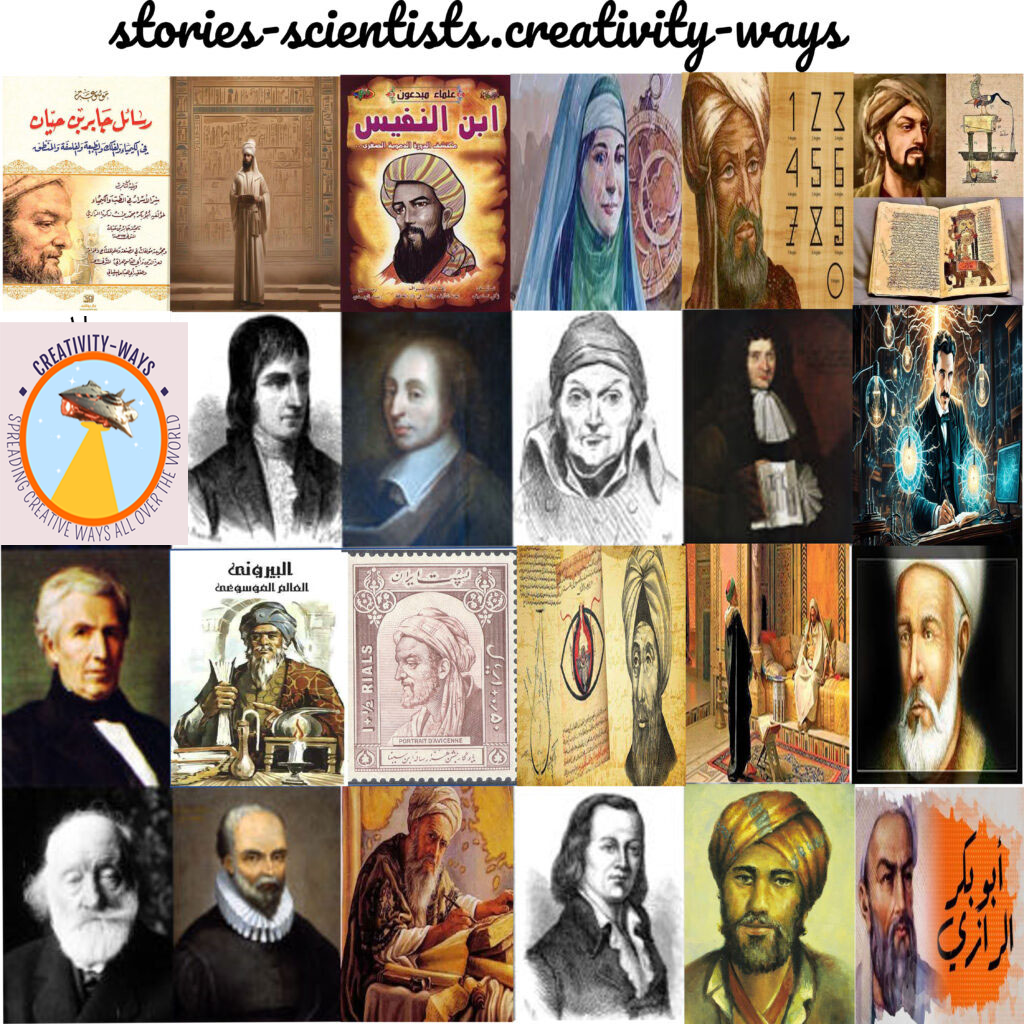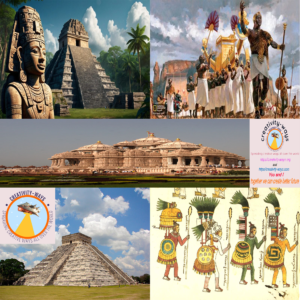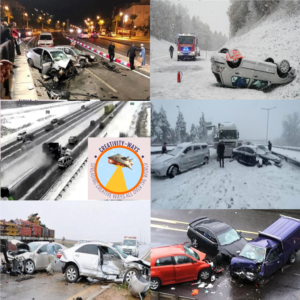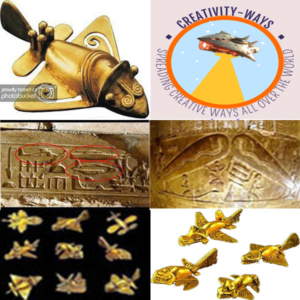creativity ways in Scientists’ Stories
creativity ways in Scientists’ Stories: A Comprehensive Exploration
Introduction to creativity ways in Scientists’ Stories
In an era defined by rapid scientific breakthroughs and global collaboration, we delve into the creative journeys of history’s most influential scientists , Throughout human history, scientific discovery has driven progress and transformed society. The stories of pioneering scientists not only highlight groundbreaking innovations but also serve as a source of inspiration for future generations. The platform creativity ways in Scientists’ Stories is dedicated to presenting these narratives in a creative and engaging manner. By examining the lives and achievements of great scientists—from ancient innovators to modern visionaries—this resource provides valuable insights into how creativity and perseverance shape the course of human knowledge.
In today’s fast‑paced world, it is more important than ever to learn from the past and understand how scientific breakthroughs were achieved. Moreover, this article aims to deliver practical lessons, emphasizing the creative strategies used by these remarkable figures. Whether you are a student, researcher, or simply a curious mind, this guide will help you appreciate the enduring impact of the creative methods featured on creativity ways in Scientists’ Stories.
The Vision and Mission Behind the Platform
The Purpose of creativity ways in Scientists’ Stories
The primary mission of the platform is to showcase the inspirational stories of scientists whose innovative thinking revolutionized their respective fields. By delving into historical narratives, the website seeks to:
- Illuminate the Legacy: Provide detailed accounts of scientific achievements that have shaped modern society.
- Educate and Inspire: Offer educational content that motivates readers to embrace creativity in their own pursuits.
- Bridge Historical Eras: Connect the contributions of ancient, medieval, and modern scientists, demonstrating how each era built upon the innovations of the past.
Furthermore, the platform is designed to be a trusted resource that not only preserves the legacy of scientific discovery but also inspires individuals to think outside the box and challenge conventional wisdom.
Goals and Core Values
The platform is founded on several core values:
- Innovation: Recognizing that creativity is at the heart of every scientific breakthrough.
- Resilience: Emphasizing the importance of persistence in the face of challenges.
- Collaboration: Highlighting the cumulative nature of knowledge and the importance of building on previous discoveries.
- Accessibility: Presenting complex scientific ideas in an easy‑to‑understand and engaging format.
These guiding principles are embedded in every article and resource published on creativity ways in Scientists’ Stories, ensuring that the content remains educational, inspiring, and accessible to a diverse audience.
Structural Blueprint of the Platform
Dividing Scientific Eras
One of the unique features of creativity ways in Scientists’ Stories is its chronological organization. The content is divided into three primary eras, each representing a distinct period of scientific advancement:
- Ancient Times: This section focuses on the contributions of early scientists from civilizations such as the Egyptians, Babylonians, and Greeks. Their innovative ideas laid the groundwork for many modern scientific principles.
- The Middle Ages: Highlighting the work of scholars during the medieval period, this section emphasizes how scientists—especially those from the Islamic world—preserved and expanded upon ancient knowledge, eventually sparking the European Renaissance.
- The Modern Era: Covering the period from the Renaissance to contemporary times, this section details the revolutionary discoveries that have transformed modern science and technology.
By organizing content in this way, creativity ways in Scientists’ Stories offers readers a clear understanding of how scientific progress is a continuous journey, with each era building on the accomplishments of its predecessors.
creativity ways in Scientists’ Stories in Ancient Times
Unleashing Creativity in the Early Ages
The ancient world was a period of profound intellectual exploration. Even though access to knowledge was limited to a select few, early scientists employed creative approaches that laid the foundation for modern disciplines. This section explores the contributions of three seminal figures from ancient times.
Euclid and the Foundations of Geometry
Euclid, often hailed as the “Father of Geometry,” made monumental contributions through his work Elements. This comprehensive compilation of mathematical knowledge not only systematized the principles of geometry but also introduced innovative methods for proving theorems. Euclid’s approach to organizing and presenting mathematical concepts is a testament to the power of creative thought in advancing human understanding.
Furthermore, his work influenced countless mathematicians over the centuries. His logical structure and methodical reasoning remain integral to mathematical education today, demonstrating that creative approaches in scientists’ stories have long‑lasting impacts.
Archimedes and His Ingenious Discoveries in Physics
Archimedes is celebrated as one of history’s greatest innovators in the field of physics. Best known for his “Eureka!” moment, Archimedes’ experiments led to the discovery of the principle of buoyancy. His inventive methods for solving practical problems, such as the use of levers and pulleys, exemplify the creative spirit that drove ancient scientific inquiry.
Moreover, Archimedes’ work in mathematics and engineering continues to influence modern science. His innovative ideas not only solved immediate engineering challenges but also laid the groundwork for future explorations in physics and mechanics.
Hippocrates and the Birth of Scientific Medicine
Hippocrates, known as the “Father of Medicine,” introduced a rational and systematic approach to healthcare that transformed the field. By emphasizing observation and documentation, Hippocrates laid the groundwork for evidence‑based medicine. His creative diagnostic methods and ethical principles still resonate with modern medical practices.
Additionally, his focus on natural explanations for diseases marked a significant departure from mystical interpretations. Through his innovative approach, Hippocrates set a precedent for future medical research and practice, underscoring the importance of creativity in the evolution of scientific thought.
creativity ways in Scientists’ Stories in the Middle Ages
The Renaissance of Scientific Thought
The Middle Ages were a time of transformation and rediscovery in the realm of science. During this period, many scholars, particularly in the Islamic world, built upon the legacy of ancient science and introduced innovative ideas that would eventually fuel the European Renaissance. This section highlights the creative contributions of three influential figures from the medieval period.
Avicenna and the Canon of Medicine
Avicenna, also known as Ibn Sina, is one of the most influential figures in the history of medicine. His magnum opus, The Canon of Medicine, served as the definitive medical textbook in both the Islamic world and Europe for centuries. Avicenna’s creative integration of philosophical insights with empirical observations revolutionized medical theory and practice.
Moreover, his systematic approach to diagnosing and treating illnesses demonstrated how creative thinking could lead to breakthroughs in understanding human health. His work not only advanced the field of medicine but also provided a model for future generations of healthcare professionals.
Al-Khwarizmi and the Birth of Algebra
Al-Khwarizmi, regarded as the “Father of Algebra,” introduced a systematic approach to solving equations that transformed mathematics. His innovative methods laid the foundation for modern algebra and influenced a wide range of mathematical disciplines. By developing clear algorithms and logical reasoning techniques, Al-Khwarizmi demonstrated that creative approaches in scientists’ stories can pave the way for significant intellectual advancements.
Furthermore, his contributions have had a lasting impact on education, as his work continues to be taught in mathematics classes around the world. The creativity he employed in developing algebraic methods remains a critical aspect of his legacy.
Al-Biruni and His Precise Geographical Measurements
Al-Biruni was a polymath whose creative methods spanned several scientific disciplines, including astronomy, geography, and physics. His accurate determination of the Earth’s circumference using simple yet innovative techniques is a prime example of creative problem‑solving. Al‑Biruni’s interdisciplinary approach allowed him to bridge gaps between theoretical science and practical application, leaving an indelible mark on the study of the natural world.
Additionally, his work set a high standard for scientific measurement and observation. By applying creative methods to quantify the world around him, Al‑Biruni helped establish a legacy of precision and innovation that continues to influence modern scientific practices.
creativity ways in Scientists’ Stories in the Modern Era
Revolutionary Innovations of the Contemporary World
The modern era is characterized by rapid technological advancements and revolutionary scientific breakthroughs. The stories of modern scientists illustrate how creative approaches continue to drive innovation and reshape our understanding of the world. This section examines the contributions of three modern scientific pioneers.
Isaac Newton and the Laws of Motion
Isaac Newton is widely recognized as one of the greatest scientists in history. His formulation of the laws of motion and universal gravitation laid the foundation for classical mechanics. Newton’s ability to synthesize vast amounts of observational data into coherent, universal principles is a prime example of creative thinking at its finest.
Moreover, his work not only revolutionized physics but also influenced the development of calculus and astronomy. Newton’s creative methods in linking mathematical theory with physical reality continue to serve as a benchmark for scientific inquiry. His legacy is a powerful reminder that creativity, combined with rigorous analysis, can lead to monumental discoveries.
Nikola Tesla: The Visionary of Modern Electrical Engineering
Nikola Tesla is celebrated for his pioneering work in electrical engineering and his transformative ideas regarding alternating current (AC) electricity. Tesla’s innovations extended beyond electrical systems; he was also a visionary in the realms of wireless communication and electromagnetism. His creative approach to solving complex engineering problems enabled him to design technologies that laid the groundwork for modern electrical grids.
Additionally, Tesla’s inventive spirit was evident in his numerous patents and experimental designs, which continue to inspire engineers and inventors today. His work exemplifies how creative approaches in scientists’ stories can lead to the development of technologies that have a lasting impact on society.
Marie Curie and the Discovery of Radioactivity
Marie Curie is one of the most iconic figures in the history of science, renowned for her groundbreaking research on radioactivity. As the first woman to win a Nobel Prize—and the only person to win in two different scientific fields—Curie’s contributions revolutionized our understanding of atomic science and radiation therapy. Her creative experimental techniques and unwavering dedication to scientific discovery allowed her to overcome significant obstacles, both personal and professional.
Furthermore, Curie’s research laid the foundation for numerous advancements in physics and medicine. Her legacy demonstrates that creative thinking and determination are key ingredients for success, even in the face of overwhelming challenges.
Bridging the Eras: The Continuity of Scientific Creativity
Connecting the Dots Between Past and Present
One of the most compelling aspects of creativity ways in Scientists’ Stories is its ability to illustrate the continuity of creative approaches across different historical eras. The scientific methods developed by ancient pioneers set the stage for the groundbreaking innovations of the Middle Ages, which in turn paved the way for the transformative discoveries of the modern era. For example, the systematic methodologies of Euclid and Archimedes influenced later thinkers like Al-Khwarizmi and Avicenna, and ultimately contributed to Newton’s formulation of universal laws.
Moreover, this cumulative progression of knowledge underscores the idea that every discovery is interconnected. By understanding how each era built upon the achievements of the previous one, readers can appreciate that creativity is a timeless attribute that drives human progress.
The Role of Innovation in Advancing Society
Furthermore, the platform emphasizes that innovation is not confined to any single period or discipline—it is a universal force that has continually propelled society forward. Whether through early mathematical theories, medieval medical texts, or modern technological breakthroughs, creative approaches in scientists’ stories demonstrate the enduring power of human ingenuity. This interconnected narrative serves as a powerful reminder that every creative idea contributes to the ever‑expanding tapestry of scientific knowledge.
Practical Lessons from the Stories of Great Scientists
Embracing a Creative Mindset in Everyday Life
Beyond the historical significance of these stories, the lessons learned from great scientists have practical applications in our daily lives. The challenges these pioneers faced and the innovative solutions they devised can inspire us to:
- View Failures as Learning Opportunities: Many scientists experienced setbacks before achieving success. Embracing failure as a stepping stone encourages resilience and persistent innovation.
- Commit to Lifelong Learning: The relentless pursuit of knowledge is a common theme in these stories. By continuously learning and questioning, we can foster a creative mindset.
- Think Outside the Box: Creative problem‑solving is at the heart of every breakthrough. Approaching everyday challenges with an open and innovative mindset can lead to unexpected solutions.
Furthermore, these practical lessons are relevant not only to aspiring scientists but also to professionals and individuals across all fields. By integrating creative approaches into everyday tasks, we can improve our decision‑making, enhance our problem‑solving skills, and ultimately contribute to personal and professional growth.
Inspiring Future Generations
In addition to practical lessons, the stories of these great scientists serve as a source of inspiration for future generations. By learning about the creative struggles and triumphs of historical figures, young minds are encouraged to dream big and pursue their own innovative endeavors. creativity ways in Scientists’ Stories aims to ignite curiosity and foster an appreciation for science and technology, ensuring that the legacy of creative approaches continues to inspire innovation for years to come.
Impact on Modern Science Communication
Enhancing Public Understanding of Complex Ideas
In today’s digital era, clear and engaging science communication is essential. creativity ways in Scientists’ Stories employs various multimedia elements—such as interactive timelines, infographics, and videos—to make complex scientific ideas accessible to a broad audience. By presenting historical narratives in a visually appealing and easily digestible format, the platform helps bridge the gap between academic research and public understanding.
Moreover, the use of straightforward language and relatable examples ensures that readers can grasp even the most intricate concepts. This commitment to clarity not only improves science literacy but also fosters a culture of continuous learning and curiosity.
Building a Community of Lifelong Learners
Additionally, the platform actively encourages community engagement by offering discussion forums, live webinars, and Q&A sessions with experts. This interactive approach allows users to share ideas, ask questions, and connect with others who share a passion for science and innovation. By fostering such a community, creativity ways in Scientists’ Stories contributes to a broader movement of lifelong learning and collective progress.
Furthermore, this inclusive environment helps break down barriers between experts and novices, making the field of science more approachable for everyone. In doing so, the platform reinforces the idea that the creative methods documented in scientists’ stories are not just historical accounts but are living examples that can inspire and guide individuals at every stage of their educational journey.
Conclusion: Celebrating the Legacy of Creative Methods in Scientists’ Stories
In conclusion, the journey through the creative approaches employed by scientists—from the ancient world to modern times—reveals a continuous thread of innovation that has propelled human progress. creativity ways in Scientists’ Stories serves as a comprehensive resource that not only preserves these inspirational narratives but also encourages readers to apply the lessons of the past to their own lives.
By exploring the remarkable achievements of figures like Euclid, Archimedes, Hippocrates, Avicenna, Al‑Khwarizmi, Al‑Biruni, Isaac Newton, Nikola Tesla, and Marie Curie, we gain a deeper understanding of how creativity and perseverance can overcome challenges and transform society. The cumulative nature of scientific progress, as demonstrated by these interconnected stories, underscores the timeless relevance of creative thinking.
Moreover, the platform emphasizes that innovation is not limited to a select few but is a potential inherent in every individual. By embracing failure, committing to lifelong learning, and thinking outside the box, we can all contribute to the ongoing narrative of scientific discovery.
Ultimately, creativity ways in Scientists’ Stories is more than just a repository of historical data—it is a call to action. It invites each one of us to become part of a larger legacy of curiosity, resilience, and creativity. As we celebrate the accomplishments of the past, we are also inspired to shape the future with innovative ideas and bold endeavors.
Start your journey of exploration today and join a community that believes in the transformative power of creative thinking. Let the inspiring stories of these great scientists motivate you to push boundaries, challenge conventional norms, and pursue your own path of discovery.
https://scientists-stories.creativity-ways.com
In a world where change is constant and innovation is key, understanding and applying creative methods in scientists’ stories can make all the difference. Embrace the lessons learned, share your ideas, and contribute to a future defined by ingenuity and progress. After all, every breakthrough begins with a single spark of creativity.













